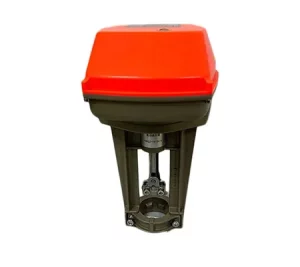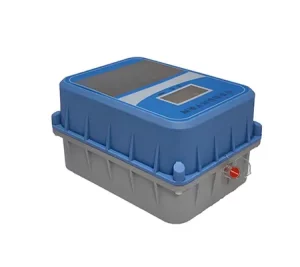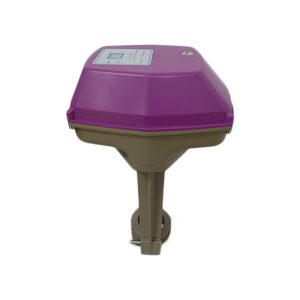Évitez que votre demande ne soit retardée dans la réponse, veuillez saisir votre WhatsApp/WeChat/Skype avec le message, afin que nous puissions vous contacter dans un premier temps
Nous vous répondrons dans les 24 heures. En cas d'urgence, veuillez ajouter WhatsApp : +8613188899036, ou WeChat : 0531-87968777. Ou appelez directement 0531-87968777.
* Nous respectons votre confidentialité et protégeons toutes vos informations. Nous utiliserons vos informations uniquement pour répondre à votre demande et ne vous enverrons jamais d'e-mails ou de messages promotionnels non sollicités.
Your system needs a reliable actuator, but the wrong choice can stall projects, waste energy, and blow budgets. Confusing specs and “one-size-fits-none” devices make it worse. We design and deliver the right actuator so your valve works, your automation stays on track, and your team sleeps at night.
Electric valve actuators convert electrical energy into motion to open, close, or modulate a valve. The main types—multi‑turn, quarter‑turn, linear, and electro‑hydraulic—fit different valve designs (ball, butterfly, globe). Selecting an electric actuator involves torque/thrust needs, control signals, environment, and integration with your control system for precise control and reliable valve automation.
Un actionneur is a device that turns a control signal into motion. In a valve, the actuator provides the force to move the valve stem or shaft so fluid flow changes on command. The valve actuator is a device that bridges digital instructions and physical flow. Without it, you’re stuck with manual actuators and human error.
Choisir le bon actionneur de vanne saves energy and reduces downtime. Actuators are devices that use electricity, air, or oil; actuators are powered differently, but the target is the same: actionner la valve safely. Actuators are commonly found in HVAC plants, chemical lines, and water networks where valve actuators are essential to keep valves open or closed at the right time.
“Understanding the different types of valve actuators early in design avoids painful retrofits.” — Our engineering lead
En tant que smart valve manufacturing plant, we build automated valve solutions that integrate with your control system (BMS, SCADA, PLC). We know the valve industry and design each actuator for a specific application so you can position the valve exactly where it needs to be.

Qu'est-ce qu'un actionneur ?
Electric actuators are commonly used where clean rooms, low maintenance, or precise control are priorities. They use an electric motor and gear sets to move a valve. Electric actuators offer high repeatability and easy feedback integration. In contrast, pneumatic actuators use compressed air; pneumatic actuators use air pressure to cycle quickly and safely in hazardous zones. Les actionneurs hydrauliques utilisent pressurized oil to deliver serious thrust—perfect when taille de la vanne is huge or sticky.
Pneumatic and hydraulic actuators shine in explosive atmospheres and rugged outdoor stations. But electric actuation shines in data-rich buildings and l'automatisation industrielle where power and data already coexist. Les actionneurs électriques sont utilisés to reduce air leaks, trimming lifecycle costs.
We produce all three families—pneumatic and hydraulic plus electric—yet this article focuses on types of electric solutions so you can match actuator type to conception de la vanne.
Quarter‑turn electric actuator: Idéal pour robinet à boisseau sphérique and butterfly valves. One 90° rotation close a valve ou open the valve (valve open or closed). This actionneur rotatif class includes rotary valve actuators—compact, fast, and cost‑effective.
Multi‑turn electric actuator: Great when the tige de soupape must travel several turns—common with gate and globe valve bodies. High thrust, slower motion.
Linear actuator: UN linear actuator converts electrical rotation into straight push/pull to position the valve plug. Think diaphragm or globe valves needing contrôle précis.
Summary Table – Common Types of Valve Actuators and Matching Valve Type
| Type d'actionneur | Typical Valve Type | Motion | Points forts | Example Product Link |
|---|---|---|---|---|
| Quarter‑turn Electric Actuator | Ball/Butterfly | 0–90° rotary | Fast, compact, economical | Actionneur rotatif proportionnel |
| Multi‑turn Electric Actuator | Gate/Globe | Multiple rotations | High thrust, slow, accurate | Actionneur rotatif RS485 |
| Linear Electric Actuator | Globe/Diaphragm | Linear stroke | Precise flow modulation | Actionneur linéaire à interrupteur |
| Electro‑hydraulic Actuator | Large ball/butterfly | Rotary or linear | High force, fail‑safe options | Custom builds available |
Common types of valve actuators include these three electric classes plus electro‑hydraulic. Valve actuators can be used in both on/off and modulating services. Actuators designed for your specification ensure the actuators function flawlessly.
When torque is huge or you want spring‑return fail‑safe without air, electro-hydraulic actuators combine an moteur électrique with a small hydraulic pack. Actuators utilize oil pressure to hold or move heavy plug forces. Actuators can deliver massive thrust in tight footprints.
Intelligent actionneur de vanne électrique packages add sensors, power management, and communication. They let you use electric signals to fermer le robinet, confirm position de la vanne, and even run self‑diagnostics. Our electric actuated solutions integrate seamlessly into building networks:
Actuators are often fitted with local displays. Actuators may include torque sensors, heaters, and manual overrides. Manual valve actuators can stay for emergency hand‑operation—because you still need to close a valve during power loss.
Vannes de régulation sont used to control the flow of fluids with accuracy. An actionneur électrique receives a 4–20 mA or digital command, then trims position. This yields contrôle précis of temperature, pressure, or level. In HVAC, automatisation des vannes keeps coils balanced. In food plants, contrôle des processus demands clean, smooth modulation.
Actuators include positioners and encoders. Feedback confirms the fonctionnement de la vanne is correct, and alarms pop if the valve actuator types deviate. Our valve actuators to ensure your sequence is safe: limit switches, torque cut‑out, and watchdog timers all stop damage.
Quand actuators use pressurized oil or air, control loops are simpler but require compressors. With electric, you add a wire—done. That’s why actuators offer many advantages in retrofit projects.
Selecting an electric actuator starts with load: stem thrust or shaft torque. Measure taille de la vanne, fluid pressure, and conception de la vanne friction. Then check duty cycle (on/off or modulating), speed, power supply, enclosure rating, and ambient temperature.
Valve actuator for a specific service? We ask how many starts per hour, how far to travel, and how often. Actuator for a specific application must also match signals: analog, digital, or network. Actuators utilize AC or DC power; redundancy may be needed.
Les actionneurs électriques utilisent gear trains to multiply torque. Some actuators are devices that use worm gears for self‑locking; others rely on brakes. Actuators use pressurized oil in electro‑hydraulic packs, or actuators use air pressure in hybrid designs. Different types of actuators will thrive in different climates.
Right valve actuator sizing avoids overload trips. Valve actuators are essential to meet commissioning schedules. Widely used actuator lines are stocked for fast delivery, but custom logic cards can be added.

How to size and select the right valve actuator
Case Study – Central HVAC Plant: A hospital needed to move a valve bank of 40 butterfly valves. We installed electric actuators are used for modulating chilled water flow. Each actuator provides feedback to the control system, balancing loops in real time. Result: 18% energy savings and fewer maintenance calls.
Case Study – Smart Water Network: A municipality upgraded a pneumatic valve field to actionneur de vanne électrique packages tied to LoRaWAN. Leak detection got faster, and crews located issues without driving miles. Valve actuators can be used with solar backup, and electric actuators offer remote diagnostics.
Case Study – District Energy Plant: The client needed valve actuation that worked with RS485 and BACnet. We used our actionneur rotatif proportionnel and a vanne à bille motorisée (vanne à boisseau sphérique électrique en acier inoxydable) to ensure clean steam control. Startups were smoother and actuators functioned perfectly under high humidity.
BAS/PLC integration is about protocol match. Electric actuators are commonly used with Modbus RTU. For wireless, use electric actuators with LoRaWAN or NB‑IoT. Ethernet/IP or BACnet/IP might sit on your plant backbone.
Select drives with built‑in IO or add external positioners. We offer automated valve solutions pre‑wired and tested. Check grounding, EMC, and lightning protection for outdoor valves. For plastic lines, try our UPVC electric butterfly valve for corrosive water (Vanne papillon électrique en PVC) and PVC ball valves.
Actuators utilize embedded web servers in some models. Actuators can deliver dashboards, trend logs, and alarms. Integrators love the ease—connect, configure, commission.

Actionneur linéaire RS485 (réinitialisation en cas de panne de courant)
Maintenance starts by checking seals, heaters, and lubricants annually. Actuators are often forgotten until they fail. Build a preventive program: verify valve open or closed states, test fail‑safe modes, and simulate loss of power so you can fermer le robinet manually.
Actuators designed for harsh zones need IP67 or NEMA 4X enclosures. Electric actuators are commonly used indoors but can be ruggedized. Actuators may include space heaters and silicone gaskets. Always log torque spikes; it signals debris or misalignment.
Lifecycle cost analysis shows actuators offer lower energy use than compressors. Spare drives, firmware updates, and training keep your fonctionnement de la vanne optimal.
What are the common types of valve actuators?
Common types: quarter‑turn, multi‑turn, linear, electro‑hydraulic, plus pneumatic valve actuators. Each actuator type fits a type de vanne and duty.
How do I choose the right valve actuator?
Start by understanding the different types and your process. Look at torque, signals, environment. We help with selecting an electric package based on real data.
Can actuators be used in hazardous areas?
Yes. Valve actuators can be used with explosion‑proof housings or moved to safe zones with linkage. Actuators are often certified to ATEX/IECEx.
How do I manually close a valve if the power fails?
La plupart des electric actuators use a handwheel override. If not, keep actionneurs manuels nearby. You can still close a valve ou move a valve manually if needed.
Do actuators offer feedback?
Yes. Actuators offer position, torque, and fault signals—vital for contrôle des vannes and alarms.
Are electric actuators suitable for large valves?
Yes, when taille de la vanne is big, either gear sizing or electro-hydraulic actuators handle the load. Les actionneurs hydrauliques utilisent oil to multiply force.
Need help? Our engineering team is ready to design, build, and ship the actuators for valve projects you’re planning—on time and on spec.